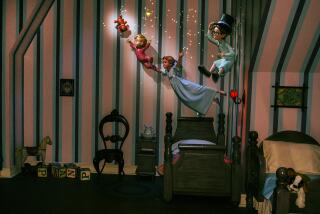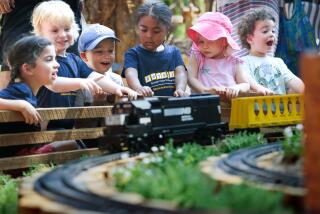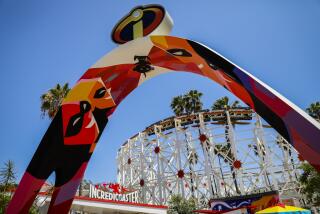Disneyland Rail Ride Is Reopened
Within hours of receiving final clearance from state inspectors Wednesday afternoon, Disneyland reopened Big Thunder Mountain Railroad for the first time since a fatal crash in September.
State officials ordered the park to retrain maintenance workers after determining that faulty maintenance had led to a Sept. 5 crash that killed 22-year-old Marcelo Torres of Gardena and injured 10 others.
In the crash, two bolts on the locomotive’s left guide wheel assembly fell off, derailing the train.
State officials, who spent nearly three months investigating the crash, were back at the park this week conducting what they called a final, comprehensive review of the ride, its operations, new policies and documents confirming the retraining.
“We’re done,” said Dean Fryer, spokesman for the Department of Occupational Safety and Health, the state agency that regulates amusement parks. “We consider all the corrective actions complied with. We’ve reviewed the operations of the ride and find that it is safe to operate.”
Disney officials said they originally planned to reopen the ride this morning, but acted sooner because of the attraction’s popularity.
“We opened to cheers and clapping,” said Sondra Haley, a Disneyland spokeswoman. “Word was out all over the Internet. There’s been a long line since 3 p.m.”
Indeed, most waited 30 minutes to board, but walked away with smiles.
“It’s excellent,” said Ngaire Dunn, 25, of New Zealand, a first-time rider. “I like the spinning and the fast movement through the dark areas. It’s a good ride, and I felt safe.”
Kelly Williams of Mission Viejo said she and her family debated whether to get on the ride: “I asked the attendant what was different. I wanted him to say it was safer, but all he would say was that it was painted. We went anyway.”
Disney officials said they retrained employees on maintenance and operating procedures and added a policy that details what ride operators should do when they hear an unusual noise. In interviews with police and state investigators, workers on the roller coaster said they heard an unusual clanking sound at least 30 minutes before the accident, but kept the coaster running.
Another new policy prohibits workers from signing off on procedures done by others.
The state did not require Disneyland to make any physical changes to the ride, but during the six-month hiatus, the company refurbished the attraction. Workers repainted the mountain, for example, for the first time since the coaster originally opened in 1979. They also replaced broken props, improved special effects and added about 20,000 feet of rock work.
“We gave it a face lift,” Haley said, “for show. It enhances the guest experience and is truer to the theme of the attraction.”
Santa Ana attorney Wylie Aitken, who is representing Torres’ family and another passenger who was hospitalized for his injuries, said “only time will tell” whether Disney’s changes have any lasting effect.
Aitken said that interviews with nearly 100 former employees point to “cost-efficiency” changes Disney made in the late 1990s that compromised safety: Veterans retired or were laid off, and employees were less familiar with the intricacies of the ride, less likely to take a ride out of service for repairs and communicated less between departments.
Haley denied any broader problems: “We take great pride in the thousands of experts who work 24/7 and in the procedures in place to keep the resort safe,” she said.
More to Read
Sign up for The Wild
We’ll help you find the best places to hike, bike and run, as well as the perfect silent spots for meditation and yoga.
You may occasionally receive promotional content from the Los Angeles Times.







